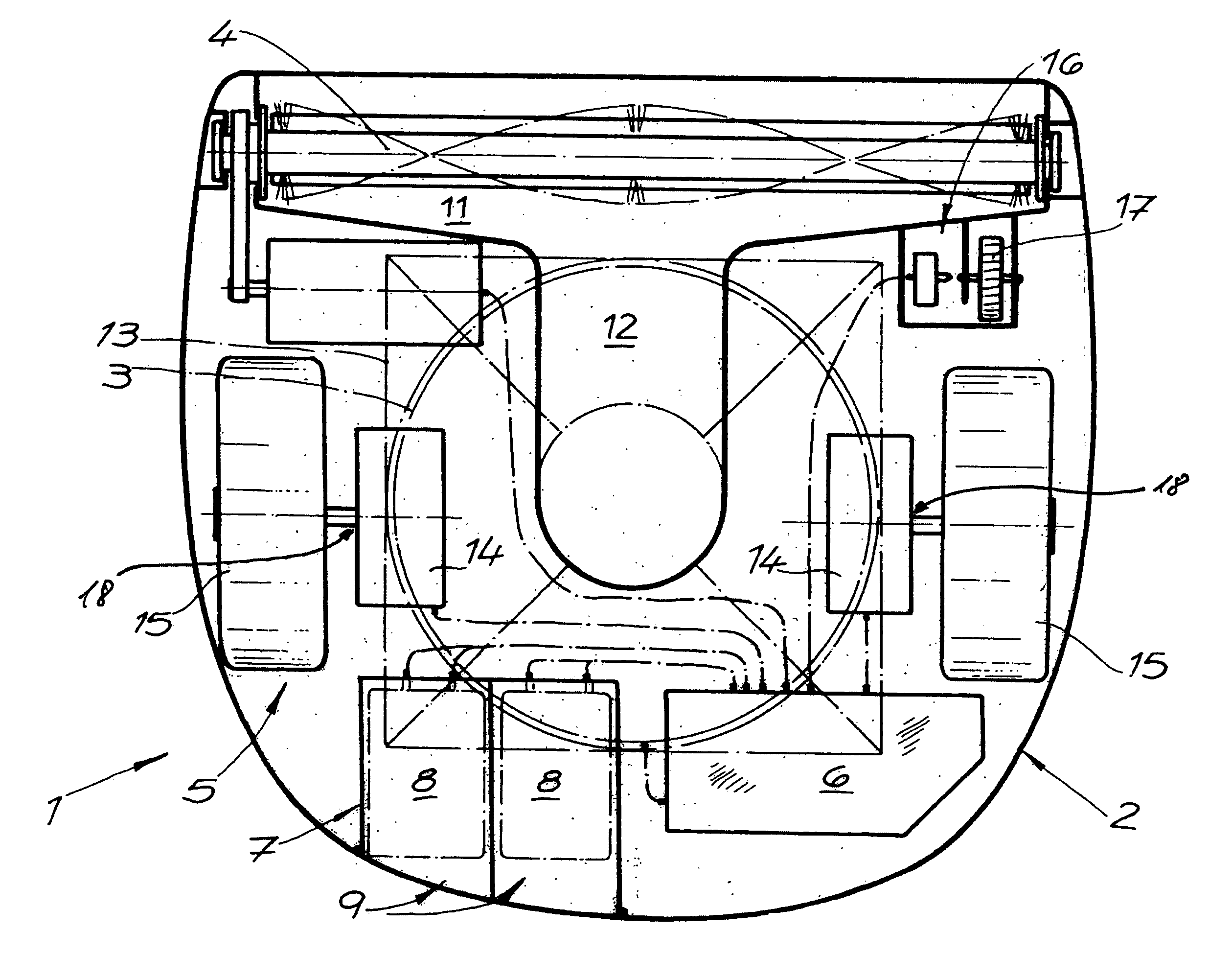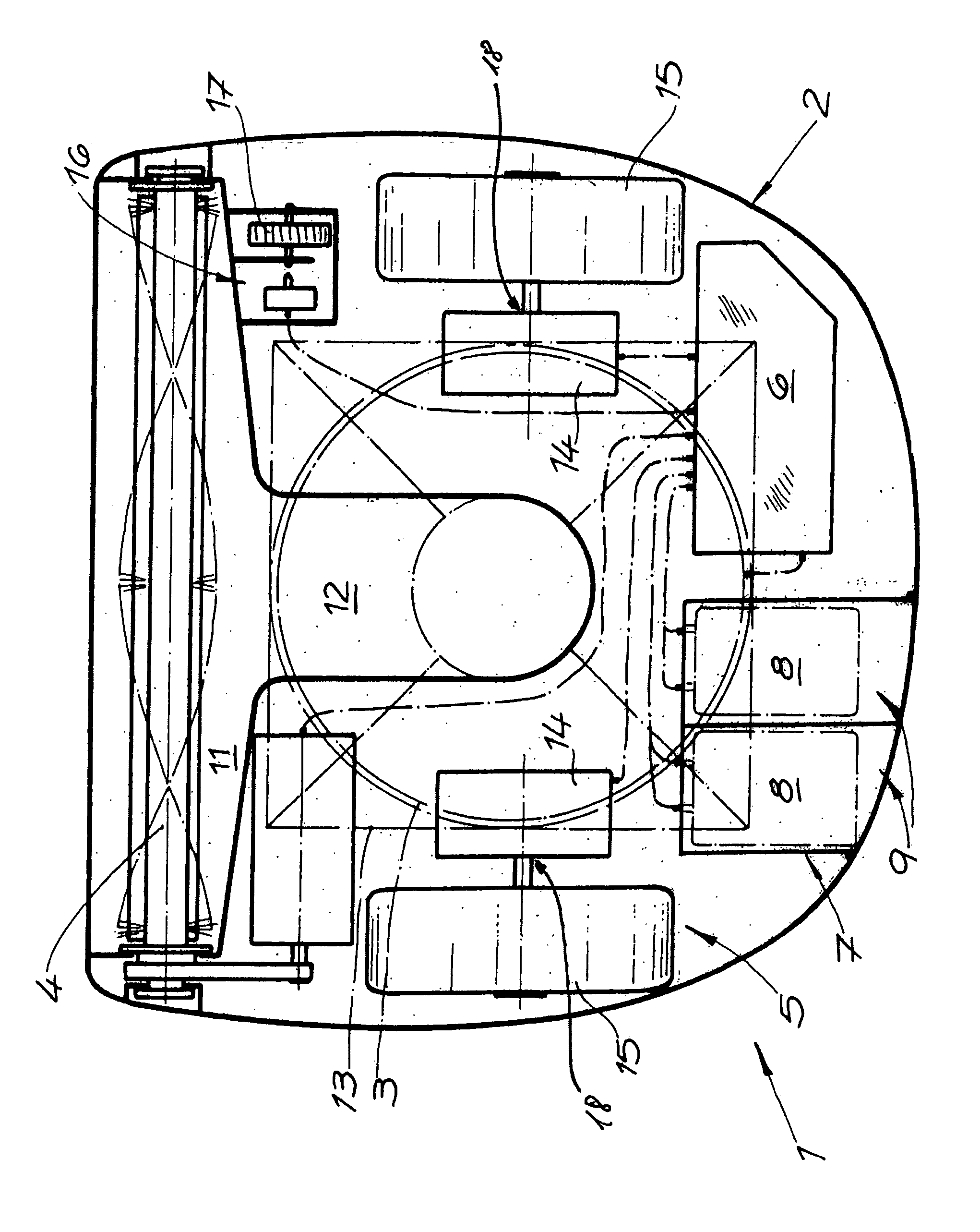Self-propelled vacuum-cleaning device
a vacuum cleaning and self-propelled technology, applied in vacuum cleaners, electrochemical generators, applications, etc., can solve the problems of disadvantage, comparatively heavy power sources, inability to effectively clean textile floor coverings, etc., and achieve good vacuuming results and sufficient traction
- Summary
- Abstract
- Description
- Claims
- Application Information
AI Technical Summary
Benefits of technology
Problems solved by technology
Method used
Image
Examples
Embodiment Construction
[0015]The single FIGURE shows a self-propelled vacuum-cleaning device for cleaning smooth and textile floor coverings, for example in the private home sector. A vacuum blower 3, an electrically driven cleaning roller 4, an electrical drive mechanism 5, control electronics 6, and a power source 7 are disposed in a housing 2. The maximal electric power of self-propelled vacuum-cleaning device 1 lies at 225 watts, whereby 170 watts are allocated to vacuum blower 3, 25 watts are allocated to the electrical roller drive for cleaning roller 4, 25 watts are allocated to drive mechanism 5, and 5 watts are allocated to control electronics 6, including the sensors, not shown, and displays. A rechargeable battery unit 8 having a capacity of 150 watts is provided as power source 7. Recharging of the rechargeable battery unit takes place in a charging station to which the self-propelled vacuum-cleaning device 1 automatically returns before rechargeable battery unit 8 has been completely discharg...
PUM
 Login to View More
Login to View More Abstract
Description
Claims
Application Information
 Login to View More
Login to View More - R&D
- Intellectual Property
- Life Sciences
- Materials
- Tech Scout
- Unparalleled Data Quality
- Higher Quality Content
- 60% Fewer Hallucinations
Browse by: Latest US Patents, China's latest patents, Technical Efficacy Thesaurus, Application Domain, Technology Topic, Popular Technical Reports.
© 2025 PatSnap. All rights reserved.Legal|Privacy policy|Modern Slavery Act Transparency Statement|Sitemap|About US| Contact US: help@patsnap.com


